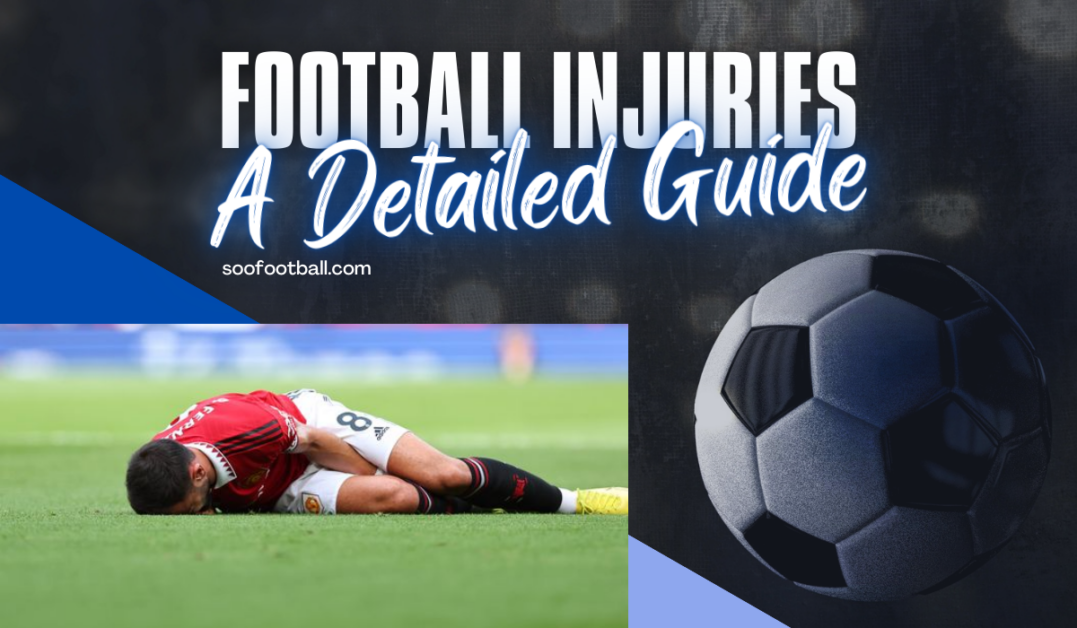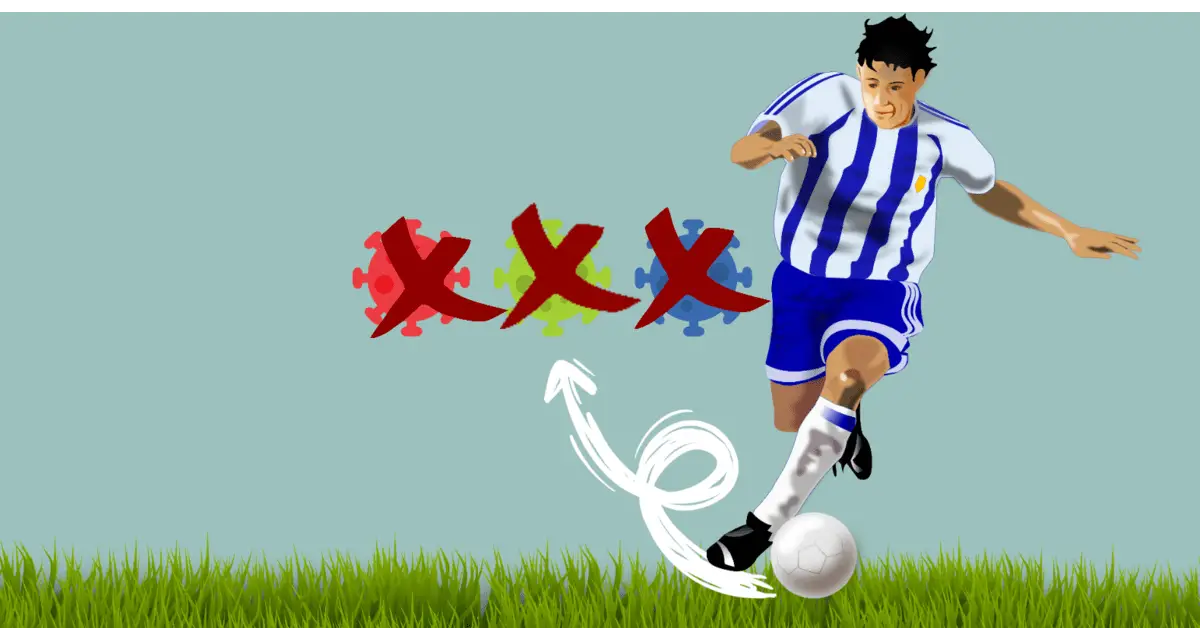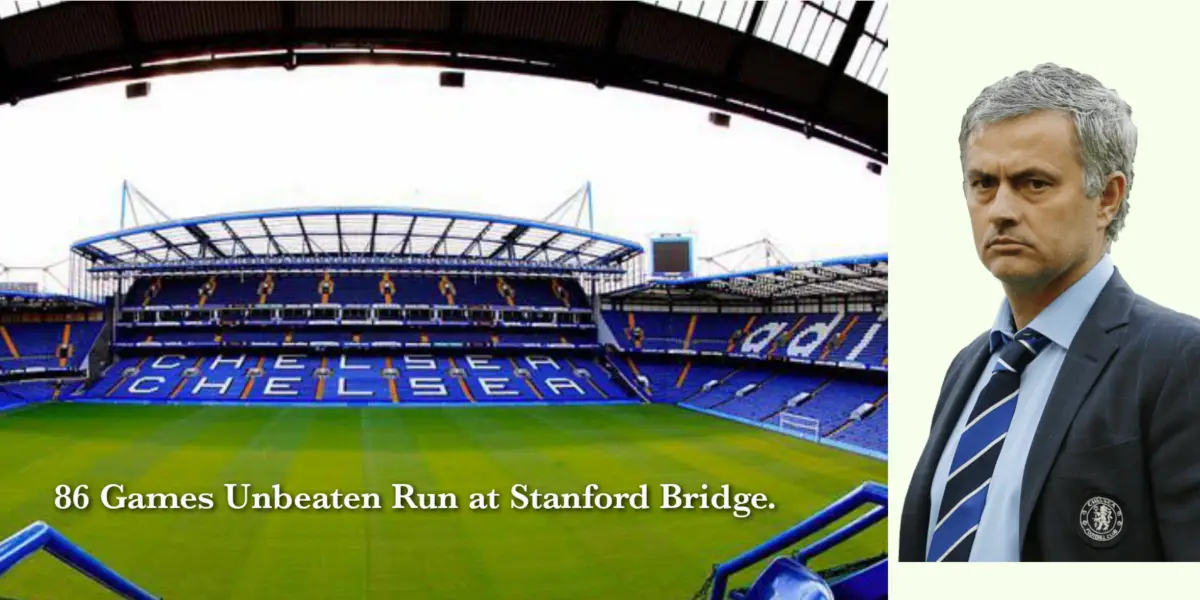Football is one of the most popular sports in the world, enjoyed by millions of fans and played by athletes of all ages and levels of skill. However, with the intense physical demands of the sport come a range of potential injuries that can have significant consequences for players’ performance and long-term health. Understanding the most common football injuries is essential for fans, players, coaches, and parents. It can help them identify the signs of an injury, prevent it from occurring, and ensure that appropriate treatment is provided when necessary.
This article will provide a comprehensive guide to the most common football injuries, outlining their causes, symptoms, treatment options, and prevention strategies.
Whether you are a player looking to stay healthy and perform at your best, a coach seeking to protect your team from injury, or a parent concerned about your child’s safety, this guide will give you the information you need to stay informed and prepared.
30 Most Common Football Injuries
The table below shows details of the 30 most common football injuries.
| SN | Injury | Brief Description | Average Length of Lay Off |
|---|---|---|---|
| 1 | Concussion | Head injury caused by a blow to the head | 1-4 weeks |
| 2 | ACL Tear | A tear in the anterior cruciate ligament in the knee | 6-12 months |
| 3 | MCL Tear | A tear in the medial collateral ligament in the knee | 2-4 weeks |
| 4 | Ankle Sprain | Overstretching or tearing of ligaments in the ankle | 1-4 weeks |
| 5 | Hamstring Strain | A tear in the hamstring muscle in the back of the thigh | 2-6 weeks |
| 6 | Groin Strain | A tear in the muscles in the groin area | 2-4 weeks |
| 7 | Meniscus Tear | A tear in the cartilage in the knee joint | 2-4 weeks |
| 8 | Shin Splints | Pain and inflammation along the shinbone | 2-4 weeks |
| 9 | Achilles Tendonitis | Inflammation of the Achilles tendon in the heel | 2-6 weeks |
| 10 | Turf Toe | A sprain of the big toe joint | 1-4 weeks |
| 11 | Dislocated Shoulder | Separation of the shoulder joint | 4-6 weeks |
| 12 | Fractured Collarbone | A break in the collarbone | 6-8 weeks |
| 13 | Lower Back Pain | Pain in the lower back | Varies |
| 14 | Plantar Fasciitis | Inflammation of the tissue on the bottom of the foot | 2-3 months |
| 15 | Patellar Tendinitis | Inflammation of the tendon that connects the kneecap to the shinbone | 2-6 weeks |
| 16 | Rib Contusion | Bruising of the ribcage | 1-4 weeks |
| 17 | Groin Pull | Strain of the adductor muscles in the inner thigh | 2-4 weeks |
| 18 | Concussion Symptoms | A range of symptoms caused by a head injury | Varies |
| 19 | Sprained Wrist | Overstretching or tearing of ligaments in the wrist | 2-4 weeks |
| 20 | Finger Fracture | A break in one of the fingers | 2-4 weeks |
| 21 | Hip Flexor Strain | A tear in the muscles that help you lift your leg | 2-4 weeks |
| 22 | Cartilage Damage | Damage to the cartilage in the knee joint | 4-8 weeks |
| 23 | Concussion Syndrome | Persistent symptoms after a head injury | Varies |
| 24 | Sprained Knee | Overstretching or tearing of ligaments in the knee | 2-4 weeks |
| 25 | High Ankle Sprain | A sprain of the ligaments that connect the tibia and fibula in the ankle | 4-6 weeks |
| 26 | Shoulder Impingement | Compression of the rotator cuff tendons in the shoulder | 2-6 weeks |
| 27 | Bursitis | Inflammation of a bursa sac in the knee, elbow, or shoulder | 2-4 weeks |
| 28 | Tennis Elbow | Overuse injury of the tendons in the elbow | 4-6 weeks |
| 29 | Broken Nose | Fracture in the nose | 1-2 weeks |
| 30 | Muscle Contusion | Bruising of a muscle | 1-3 weeks |
Note: These are average recovery times and can vary depending on the severity of the injury and other factors.
From the above table, it is clear that the most serious injury is the Anterior Cruciate Ligament Tear, which can result in a long layoff of 6-12 months. This injury can be career-ending for some players and requires extensive rehabilitation to recover fully.
[For reference sake, it’ll be good to read up most talented injury-prone footballers in history.]
Injury Stats
See below some key stats about the most common football injuries.
| SN | Injury | Injury Rate (European Football) | Incidence (in European Football) |
|---|---|---|---|
| 1 | Hamstring Strain | 12% | 1.3 injuries per 1,000 hours of play |
| 2 | Ankle Sprain | 9% | 1.2 injuries per 1,000 hours of play |
| 3 | ACL Tear | 2% | 0.1 injuries per 1,000 hours of play |
| 4 | Groin Strain | 6% | 0.7 injuries per 1,000 hours of play |
| 5 | Meniscus Tear | 1% | 0.1 injuries per 1,000 hours of play |
| 6 | Patellar Tendinitis | 4% | 0.4 injuries per 1,000 hours of play |
| 7 | Plantar Fasciitis | 4% | 0.4 injuries per 1,000 hours of play |
| 8 | Achilles Tendinitis | 3% | 0.3 injuries per 1,000 hours of play |
| 9 | Shin Splints | 3% | 0.3 injuries per 1,000 hours of play |
| 10 | Concussion | 2% | 0.04 injuries per 1,000 hours of play |
| 11 | MCL Sprain | 5% | 0.5 injuries per 1,000 hours of play |
| 12 | Rib Fracture | 2% | 0.05 injuries per 1,000 hours of play |
| 13 | Sports Hernia | 1% | 0.1 injuries per 1,000 hours of play |
| 14 | Hip Pointer | 0.5% | 0.03 injuries per 1,000 hours of play |
| 15 | AC Joint Separation | 0.2% | 0.05 injuries per 1,000 hours of play |
| 16 | Turf Toe | 1% | 0.1 injuries per 1,000 hours of play |
| 17 | Dislocated Shoulder | 1.5% | 0.02 injuries per 1,000 hours of play |
| 18 | Calf Strain | 2% | 0.2 injuries per 1,000 hours of play |
| 19 | LCL Sprain | 2% | 0.02 injuries per 1,000 hours of play |
| 20 | Concussion Symptoms | 1.5% | Varies |
| 21 | Hip Flexor Strain | 1.5% | 0.2 injuries per 1,000 hours of play |
| 22 | Cartilage Damage | 1% | 0.03 injuries per 1,000 hours of play |
| 23 | Concussion Syndrome | 1.5% | 0.05 injuries per 1,000 hours of play |
| 24 | Sprained Knee | 3% | 0.1 injuries per 1,000 hours of play |
| 25 | High Ankle Sprain | 1% | 0.1 injuries per 1,000 hours of play |
| 26 | Shoulder Impingement | 0.7% | 0.05 injuries per 1,000 hours of play |
| 27 | Bursitis | 0.2% | 0.02 injuries per 1,000 hours of play |
| 28 | Tennis Elbow | 0.3% | 0.02 injuries per 1,000 hours of play |
| 29 | Broken Nose | 1.5% | 0.01 injury per 1000 hours of play |
| 30 | Muscle Contusion | 1.4% | 0.05 injuries per 1000 hours of play |
The table shows the injury rate and incidence for 30 different football injuries. The most common injuries are hamstring strain and ankle sprain, with incidence rates of 1.3 and 1.2 injuries per 1,000 hours of play, respectively.
However, Anterior Cruciate Ligament tear has a much lower incidence rate of 0.1 injuries per 1,000 hours of play. Still, it is considered a more serious injury as it can take 6-12 months to recover.
Conclusion
As a football fan, it’s important to understand the common injuries that players face on the field. This knowledge can help you appreciate the risks that players take and the dedication they have to the sport.
It is also essential to support safety measures to prevent these injuries or minimize their severity.
By advocating for safety measures and supporting players who are recovering from injuries, you can help make football a safer and healthier sport for everyone involved.
Further Reading:
- Why Football Players Fake Injuries
- What Is The Future of Football?
- Football Mascots: A Complete Guide
- Football Derbies: A Guide
- How To Be A Professional Footballer





